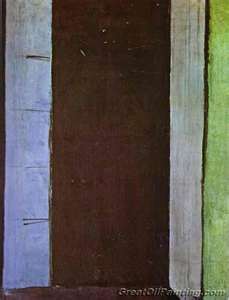
As I have stated elsewhere on this blog (such as here, and by including many of her poems as exemplars of particular types of turns), poet-critic Jane Hirshfield is one of today’s great advocates and practitioners of the poetic turn. Hirshfield’s advocacy for the turn continues in her latest, excellent essay on poetry, “Close Reading: Windows” (The Writer’s Chronicle 43.4 (Feb. 2011): 22-30).
Hirshfield begins her essay, stating, “Many good poems have a kind of window-moment in them–a point at which they change their direction of gaze or thought in a way that suddenly opens a broadened landscape of meaning and feeling. Encountering such a moment, the reader breathes in some new infusion, as steeply perceptible as any physical window’s increase of light, scent, sound, or air. The gesture is one of lifting, unlatching, releasing; mind and attention swing open to newly peeled vistas.”
Though Hirshfield notes that such window-moments may be momentary elements within a poem, most often the window-moment is associated with the turn. Hirschfield states, “In the swerve into some new possibility of mind, a poem with a window stops to look elsewhere, drawing on something outside of its self-constructed domain and walls. A window can be held by a change of sense realms or a switch of rhetorical strategy, can be framed by a turn of grammar or ethical stance, can be sawn open by an overt statement or slipped in almost unseen. Whether large or small, what I am calling a window is recognized primarily by the experience of expansion it brings: the poem’s nature is changed because its scope has become larger.”
The relation between the window-moment and the turn is made even clearer when one considers that many of the poems Hirshfield discusses in her essay have major turns, turns which often are equated with the window-moment.
The turn in the final stanza of Philip Larkin’s “High Windows” is the major window-moment in the poem, the place where, according to Hirshfield, the poem “suddenly turns.” (In Structure & Surprise, Christopher Bakken considers “High Windows” a poem employing an ironic structure.)
A vital window-moment in Emily Dickinson’s “We grow accustomed to the Dark–“ (a poem that employs a Metaphor-to-Meaning Structure) occurs at the poem’s major turn from metaphor to meaning; as Hirshfield notes, “‘And so of larger–Darkness– / Those Evenings of the Brain– / When not a Moon disclose a sign– / Or Star–come out–within–‘ With these lines, the poem moves into charged terrain.”
In Wislawa Szymborska’s Some People, a poem employing a List-with-a-Twist Structure, the window-moment occurs at the poem’s final twist. As Hirshfield notes of the poem’s third-to-last line, “With that line’s grammatical knife-twist, certain kinds of awareness we were not even aware had been supressed rush back into the poem.”
The major turn in Czeslaw Milosz’s “Winter,” again, turns out to be its window-moment. Hirshfield, in fact, calls the poem’s “mid-point turn to the vocative ‘you'” one of “the most breathtaking transitions and window-openings to be found anywhere in poetry, in its intimacy and in what it summons.”
I learned a great deal from “Close Reading: Windows.” Not the least of this learning came from being introduced to (or reminded of) of some excellent poems with amazing turns in them. I added Dickinson’s poem to the Metaphor-to-Meaning Structure page and I added Szymborska’s poem to the List-with-a-Twist Structure page after reading Hirshfield’s excellent, informative essay. Inspired by and agreeing with Hirshfield, I also decided to add Milosz’s poems to the list of poems on Voltage!, the page of this blog devoted to poems that have truly shocking and amazing, truly electric, turns.
I’ve been deeply impressed by some vital new writing on issues intimately related to the turn, writing such as Peter Sack’s “‘You Only Guide Me by Surprise’: Poetry and the Dolphin’s Turn” and Hank Lazer’s “Lyricism of the Swerve: The Poetry of Rae Armantrout” (collected in Lyric & Spirit: Selected Essays 1996-2008). Jane Hirshfield’s “Close Reading: Windows” certainly takes its place among these important works, doing its part to help reveal the relevance and the significance of the turn in poetry today.



